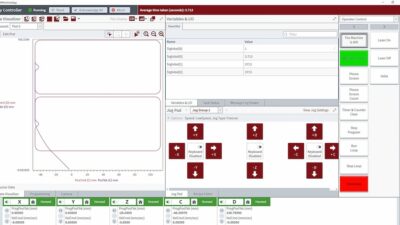Certainty often provides comfort, except when that certainty is the ever-increasing rate of business change.Rapid changes, even when familiar, often cause discomfort and create stress. To consider the impact, think of feelings created when encountering three or more of the following changes within a week: reorganization or merger; switch in project ownership; addition or loss of team memb...
Certainty often provides comfort, except when that certainty is the ever-increasing rate of business change.
Rapid changes, even when familiar, often cause discomfort and create stress. To consider the impact, think of feelings created when encountering three or more of the following changes within a week: reorganization or merger; switch in project ownership; addition or loss of team members; stepped-up deadlines; reduced budget; new procedures, directions, or scope; upgraded hardware, software, tools, or configurations; and new customers, internal and external, with new sets of requests or requirements.
Think about how people might find out about changes (through the grapevine or an external source, e-mail, or in person), and about what they feel they can do about the changes (sometimes nothing).
Excessive griping, anger
Teams and their members vary in how well they react and handle such changes. Warning signs that might point to a need for improvements include excessive griping, finger pointing, coasting, anger, isolation, marked changes in behavioral styles, or even project sabotage, according to Diane Bolton, an instructor for Development Dimensions International (DDI, Pittsburgh, Pa.), a global human resource and training consulting firm.
“We’re not in complete control of most of what we encounter, but often live our lives as if we are,” says Ms. Bolton. Stress can result when circumstances differ from expectations of what’s happening around us.
“Would we change our values and how we interact with others if we knew our lives would end in three months? That kind of thinking focuses us on what’s really important,” Ms. Bolton says, such as the way we influence those around us, create buy-in, attend to the end product or results, get involved, and become a catalyst for positive change in others.
Catalysts, those who initiate action in others, can help colleagues: explore change opportunities; introduce them to change in a way that increases commitment to implementing the change; and overcome resistance of those having trouble adapting, according to DDI’s workshop, “Helping Others Adapt to Change.”
Esteem, encouragement
In helping others work through changes, DDI says leaders should:
-
Maintain and enhance self-esteem by recalling successes, emphasizing value in ideas, sharing information, and providing an environment of support;
-
Listen and respond with empathy, by not making judgements, but acknowledging and affirming feelings;
-
Ask for help and encourage involvement by seeking options and breaking barriers;
-
Share thoughts, insights, or in some circumstances even feelings to explain the rationale or reasons behind the change; and
-
Provide support without removing responsibility from others for their roles.
Myriad complexities accompany changes, but DDI has created a set of “Interaction Guidelines” for helping others adapt to change: “Open, Clarify, Develop, Agree, and Close” (see “Help others with change” sidebar).
Traits that leaders should incorporate include clarity, honesty, and confidence in the outcome. Ms. Bolton says incorporating those in any interaction about change requires working through personal feelings and concerns about the change, fitting the message to the audience, and giving some thought to possible responses.
Agendas help
Engineers—especially those with strengths leaning more toward analysis than communication—appreciate having a straightforward process for working with others on change, says Ms. Bolton.
“For some, having an agenda, or roadmap, for meetings involving change is most helpful, even if it’s just a one-on-one interaction,” she adds.
For more information on DDI, visit www.controleng.com/freeinfo .
| Author Information |
| Mark T. Hoske, editor-in-chief [email protected] |
To help others with change…
“Open” Describe the change;
“Clarify” Explain the change’s impact on the person or team;
“Develop” Seek ideas for implementing the change;
“Agree” Concur on how to implement the change; and
“Close” Summarize the plan and confirm agreement.
Source: Control Engineering with information from Development Dimensions International Inc.




